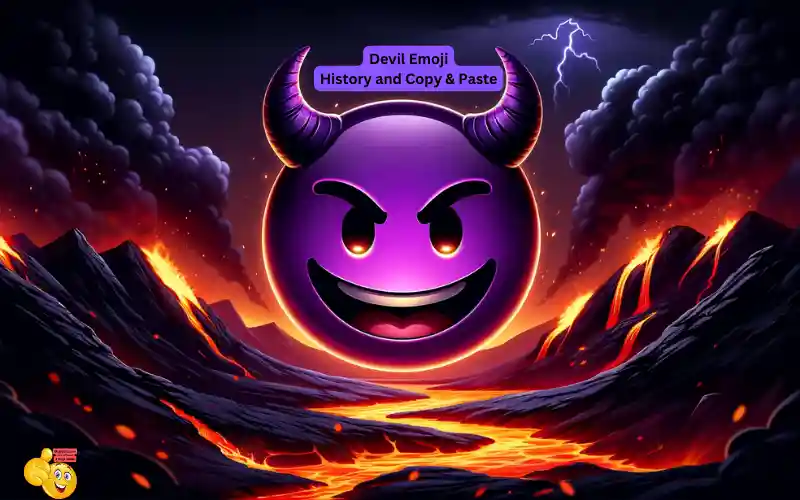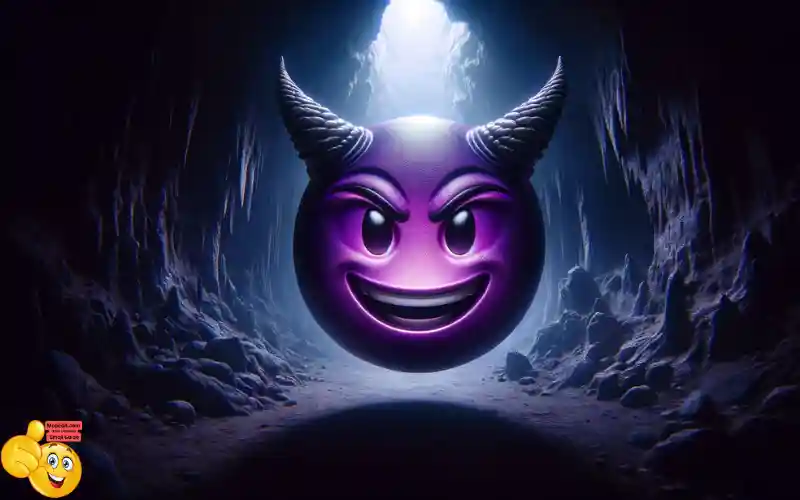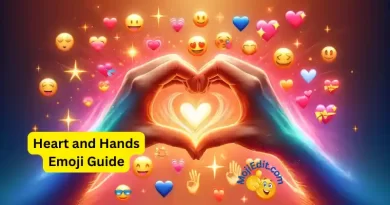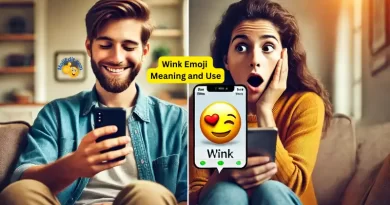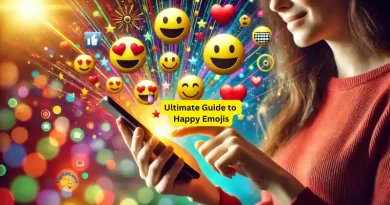Revelando o emoji do demônio 😈: Mais do que apenas um sorriso malicioso
Introduction: A Warm Welcome to the Devil Emoji 😈
Emojis are the unsung heroes of digital communication these days. With their little pictures, they can show emotions and meanings that words alone often miss and one emoji that’s taken the spotlight big time is the little red devil dude 😈. This cheeky little guy has made himself at home in our texts and chats, leaving us scratching our heads and wondering what’s up with him. But what makes the devil emoji so darn mischievous? And how did he get to be such a big deal in our typing? Let’s take a look at this emoji to try to figure him out. Well go back to his origins, see how he evolved digitally and even look at how brands use him for marketing. By the end, we’ll get to the bottom of what makes this little red imp tick.
First up, a history lesson. Where did this emoji come from? What are his roots? Understanding his past might help explain his appeal. Then we’ll fast forward to see his journey into digital land. How did keyboard creators decide he’d be a good fit for smartphones? After his origins, well explore how he works his way into conversations now. What nuances does he add? How does he change meanings? Looking at real examples will show his role.
Finally, we’ll peek at his role in ads and branding. Companies leverage trends to sell products, and this emoji is hot. We’ll look at some cases where marketers tap into his allure. So, join me on this winding adventure to uncover the secrets of the devil emoji! By the end, his mischievous nature will be laid bare.
Let’s dive in!
The Devil Emoji Unmasked 😈
Emoji Appearance: Description and Variations 🧐
The Devil Emoji, often depicted as a mischievous face with horns, a wide grin, and sometimes a pointed beard, has a distinct appearance that sets it apart in the emoji universe. Here’s a breakdown of its key features:
|
Feature |
Descrição |
|
Rosto |
Smirking with a wide, toothy grin |
|
Horns |
Two small, devilish horns on the head |
|
Olhos |
Often narrowed or squinted |
|
Beard (Optional) |
A pointed beard for added devilishness |
Similar Emojis: Exploring Other Mischievous Emoticons 😏👿
While the Devil Emoji reigns supreme in conveying mischief, there are other emoticons that share a mischievous vibe. Here are some similar emojis that might be lurking in your emoji keyboard:
|
Emoji |
Descrição |
|
😏 Smirking Face |
A subtle, smirking expression |
|
👿 Angry Face with Horns |
Anger with a devilish twist |
|
😎 Smiling Face with Sunglasses |
Cool confidence with a hint of mischief |
This table showcases the Devil Emoji’s distinctive features alongside other emojis that share its mischievous essence.
The Devil Emoji in Culture and Communication 🌍
Cultural Significance: Historical and Modern Interpretations 📜
The allure of the Devil Emoji extends beyond its digital presence, finding roots in historical folklore and modern-day interpretations. Across various cultures, the concept of mischief, temptation, and rebellion has often been associated with devilish figures. From ancient mythologies to contemporary narratives, the devilish archetype remains a symbol of cunning and allure.
In digital communication, the Devil Emoji has evolved to represent playful teasing, sly humor, or even a sense of rebellion. Its usage transcends language barriers, allowing individuals to convey a mischievous tone across diverse cultural backgrounds.
Communication: How We Use the Devil Emoji in Conversations 🗨️💬
The Devil Emoji has become a staple in our virtual conversations, adding layers of emotion and tone to our text-based interactions. Its usage varies across contexts:
- Teasing and Playfulness: Employed to tease friends or playfully challenge their statements.
- Tongue-in-cheek Humor: Conveys a sly or sarcastic tone, often accompanying witty remarks.
- Expressing Rebellion or Edginess: Used to show a rebellious or edgy attitude in certain contexts.
The versatility of the Devil Emoji allows individuals to infuse conversations with nuances that text alone might struggle to convey.
The Evolution of Devilish Expressions 😈
Popularity Surge: Rise of the Devil Emoji in Digital Communication 📈
The Devil Emoji’s ascent to prominence parallels the growing reliance on emojis as a form of expression. Its adoption surged with the rise of instant messaging and social media platforms, where concise yet expressive communication became essential.
Social Platforms: Where and How It’s Frequently Used 🔥📱
From WhatsApp chats to Twitter banter, the Devil Emoji finds its way into various digital landscapes. Platforms like Instagram and Snapchat have popularized their usage in stories and captions, where a touch of mischief adds flair to visual content.
The Devil Emoji’s Influence 💡
Emotional Context: Its Role in Conveying Tone and Emotion 🤔😈
One of the Devil Emoji’s intriguing traits lies in its ability to convey a spectrum of emotions and tones. Its usage isn’t confined to just mischief; rather, it adapts to different contexts:
- Humor and Light-heartedness: Infuses conversations with a playful or mischievous undertone.
- Assertiveness and Confidence: Adds a touch of boldness or assertive attitude to statements.
- Ambiguity and Irony: Allows for nuanced expressions, especially in sarcastic or ironic contexts.
The subtle variations in its usage empower individuals to craft precise emotional cues in digital conversations.
Marketing and Products: Devil Emoji Merchandise and Branding Opportunities 🛍️💻
The Devil Emoji’s ubiquity hasn’t gone unnoticed in marketing and branding strategies. Companies keen on resonating with younger, digitally savvy audiences often leverage emojis, including the Devil Emoji, to:
- Connect with Audiences: Embrace the playful side by incorporating emojis in advertisements or brand campaigns.
- Merchandise and Apparel: Create products featuring the Devil Emoji, catering to the emoji-savvy consumer base.
From merchandise adorned with devilish grins to brands adding emojis in their social media campaigns, the Devil Emoji has become a trendy symbol for connection and engagement.
Devil Emoji Etiquette and Misconceptions 🤷
Social Nuances: When and How to Use the Devil Emoji Respectfully 🙌
While the Devil Emoji is versatile, its usage demands a nuanced approach:
- Conheça seu público: Gauge the recipient’s familiarity and comfort with emojis in conversations.
- O contexto é importante: Use the Devil Emoji judiciously, aligning its tone with the conversation’s context.
Misunderstandings: Debunking Common Myths and Misconceptions 😕❌
Despite its widespread usage, misconceptions about the Devil Emoji persist. Addressing these myths can help clarify its intended meaning:
- Always Negative: Contrary to belief, the Devil Emoji isn’t always malevolent; it often signifies playfulness.
- Universal Interpretation: Its interpretation may vary, necessitating caution in diverse conversations.
Understanding these nuances can prevent misunderstandings and ensure effective communication.
The Devil Emoji, with its mischievous grin and subtle nuances, has carved a significant niche in our digital interactions. From conveying playful banter to adding layers of emotion, its versatility knows no bounds. As we bid adieu to this exploration, a few key takeaways linger:
- Versatility in Expression: The Devil Emoji’s adaptability allows it to convey a spectrum of emotions, from playful jest to assertive confidence.
- Cultural Resonance: Rooted in historical symbolism, its modern interpretation reflects a blend of cultural significance and evolving communication trends.
- Marketing and Connection: Brands harness their appeal to connect with audiences, leveraging their familiarity to create engaging content and merchandise.
- Etiquette and Clarity: Understanding its nuances and using it judiciously can avoid misinterpretations, ensuring effective communication.
In a world where digital expressions evolve alongside language, the Devil Emoji stands as a testament to the rich tapestry of human communication, encapsulating emotions in a mere pixelated grin.
Conclusão
The Devil Emoji 😈 is a fun way to spice up texts and social media posts. I think we shouldn’t be afraid to use emojis like this to show some personality online. The little red devil face can add humor or irony to messages between friends. It’s got kind of a mischievous vibe which makes conversations livelier and I like that this emoji has different meanings depending on the context. It can be totally innocent and cute if you’re just joking around. Or it can hint that you’re up to no good in a flirty way.
Considerações finais
There’s something playful about the Devil Emoji that makes digital communication less boring. As we keep texting and posting online, I hope this emoji sticks around. It puts a smile on my face when someone drops a little 😈 to liven things up. The Devil Emoji brings out people’s sense of humor and gives our words more depth. So I say embrace the fun side of the devil emoji to spice up chats in a unique way only emojis can.
Perguntas e respostas frequentes
The devil emoji is purple to represent a fantasy creature, which often differs from human skin tones, avoiding implications of a specific ethnicity or identity. This color choice also adds a playful, supernatural element to its mischievous grin.
It’s U+1F608. This code lets you use the emoji across multiple platforms.
Totally! While some see it as playful, it can come off as rude if misused.
its angelic counterpart is the angel emoji 😇
Context is key! It’s great among friends but maybe not for formal emails.

